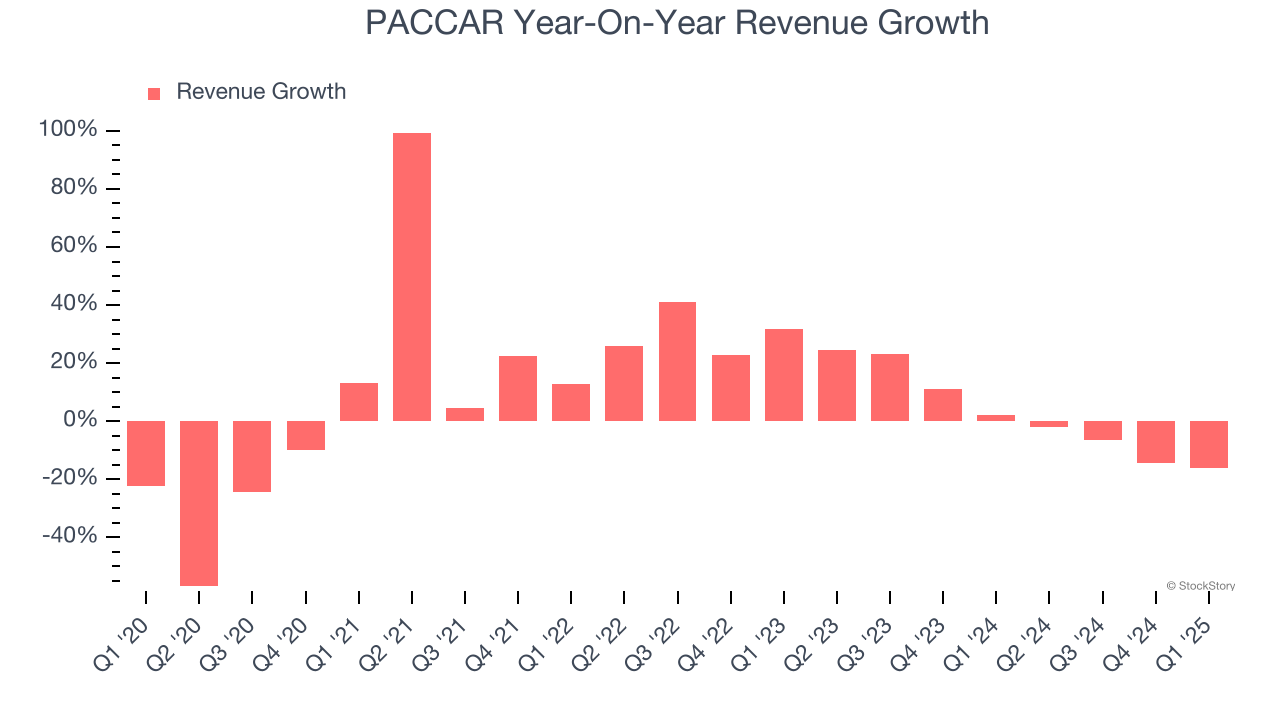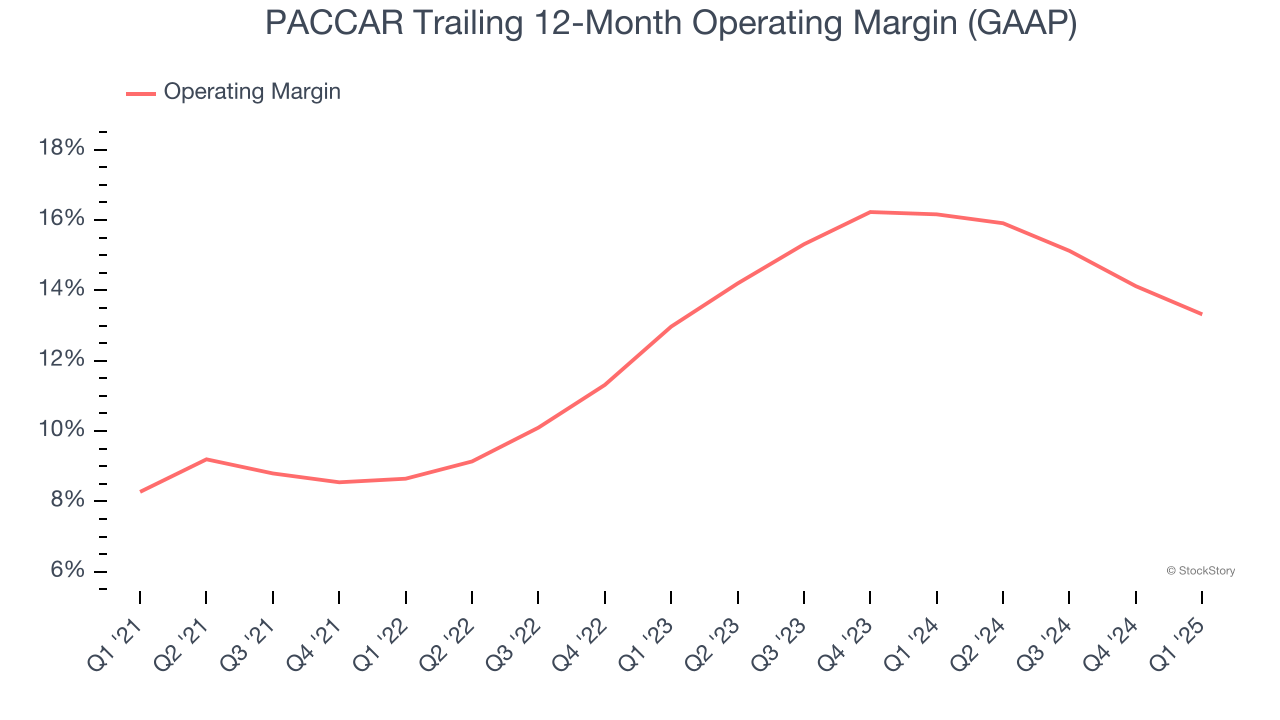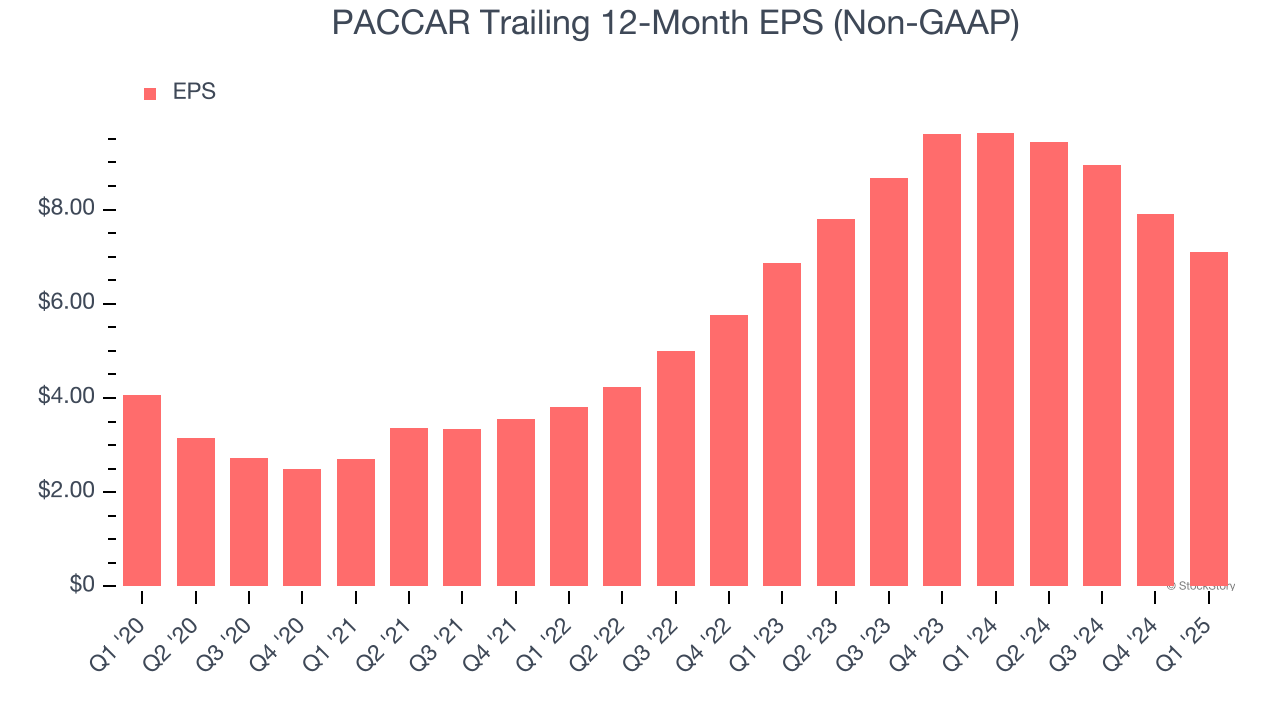
Trucking company PACCAR (NASDAQ: PCAR) missed Wall Street’s revenue expectations in Q1 CY2025, with sales falling 16% year on year to $6.91 billion. Its non-GAAP profit of $1.46 per share was 7.5% below analysts’ consensus estimates.
Is now the time to buy PACCAR? Find out by accessing our full research report, it’s free.
PACCAR (PCAR) Q1 CY2025 Highlights:
- Revenue: $6.91 billion vs analyst estimates of $6.97 billion (16% year-on-year decline, 0.8% miss)
- Adjusted EPS: $1.46 vs analyst expectations of $1.58 (7.5% miss)
- Operating Margin: 12.7%, down from 15.9% in the same quarter last year
- Free Cash Flow Margin: 10.8%, down from 15.5% in the same quarter last year
- Market Capitalization: $48.31 billion
BELLEVUE, Wash.--(BUSINESS WIRE)--“PACCAR reported strong annual revenues and net income in 2024,” said Preston Feight, chief executive officer.
Company Overview
Founded more than a century ago, PACCAR (NASDAQ: PCAR) designs and manufactures commercial trucks of various weights and sizes for the commercial trucking industry.
Sales Growth
A company’s long-term performance is an indicator of its overall quality. Any business can experience short-term success, but top-performing ones enjoy sustained growth for years. Unfortunately, PACCAR’s 5.9% annualized revenue growth over the last five years was tepid. This wasn’t a great result compared to the rest of the industrials sector, but there are still things to like about PACCAR.

We at StockStory place the most emphasis on long-term growth, but within industrials, a half-decade historical view may miss cycles, industry trends, or a company capitalizing on catalysts such as a new contract win or a successful product line. PACCAR’s recent performance shows its demand has slowed as its annualized revenue growth of 1.7% over the last two years was below its five-year trend. We also note many other Heavy Transportation Equipment businesses have faced declining sales because of cyclical headwinds. While PACCAR grew slower than we’d like, it did do better than its peers. 
This quarter, PACCAR missed Wall Street’s estimates and reported a rather uninspiring 16% year-on-year revenue decline, generating $6.91 billion of revenue.
Looking ahead, sell-side analysts expect revenue to decline by 3.1% over the next 12 months, a deceleration versus the last two years. This projection doesn't excite us and implies its products and services will see some demand headwinds. At least the company is tracking well in other measures of financial health.
Here at StockStory, we certainly understand the potential of thematic investing. Diverse winners from Microsoft (MSFT) to Alphabet (GOOG), Coca-Cola (KO) to Monster Beverage (MNST) could all have been identified as promising growth stories with a megatrend driving the growth. So, in that spirit, we’ve identified a relatively under-the-radar profitable growth stock benefiting from the rise of AI, available to you FREE via this link.
Operating Margin
Operating margin is a key measure of profitability. Think of it as net income - the bottom line - excluding the impact of taxes and interest on debt, which are less connected to business fundamentals.
PACCAR has been an efficient company over the last five years. It was one of the more profitable businesses in the industrials sector, boasting an average operating margin of 12.5%.
Looking at the trend in its profitability, PACCAR’s operating margin rose by 5 percentage points over the last five years, as its sales growth gave it operating leverage.

This quarter, PACCAR generated an operating profit margin of 12.7%, down 3.2 percentage points year on year. This contraction shows it was less efficient because its expenses increased relative to its revenue.
Earnings Per Share
Revenue trends explain a company’s historical growth, but the long-term change in earnings per share (EPS) points to the profitability of that growth – for example, a company could inflate its sales through excessive spending on advertising and promotions.
PACCAR’s EPS grew at a remarkable 11.8% compounded annual growth rate over the last five years, higher than its 5.9% annualized revenue growth. This tells us the company became more profitable on a per-share basis as it expanded.

Diving into PACCAR’s quality of earnings can give us a better understanding of its performance. As we mentioned earlier, PACCAR’s operating margin declined this quarter but expanded by 5 percentage points over the last five years. This was the most relevant factor (aside from the revenue impact) behind its higher earnings; taxes and interest expenses can also affect EPS but don’t tell us as much about a company’s fundamentals.
Like with revenue, we analyze EPS over a shorter period to see if we are missing a change in the business.
For PACCAR, its two-year annual EPS growth of 1.7% was lower than its five-year trend. This wasn’t great, but at least the company was successful in other measures of financial health.
In Q1, PACCAR reported EPS at $1.46, down from $2.27 in the same quarter last year. This print missed analysts’ estimates, but we care more about long-term EPS growth than short-term movements. Over the next 12 months, Wall Street expects PACCAR’s full-year EPS of $7.09 to shrink by 16.2%.
Key Takeaways from PACCAR’s Q1 Results
Both revenue and EPS missed. Overall, this was a weaker quarter. The stock traded down 6.7% to $85.85 immediately after reporting.
PACCAR underperformed this quarter, but does that create an opportunity to invest right now? If you’re making that decision, you should consider the bigger picture of valuation, business qualities, as well as the latest earnings. We cover that in our actionable full research report which you can read here, it’s free.


